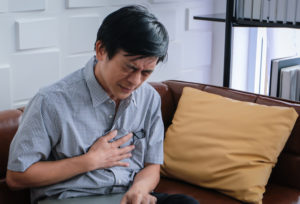Stroke signs
Stroke is a medical emergency. If you are experiencing the signs and symptoms of a stroke please call 911. Do not drive to the hospital. An ambulance will get you to the nearest regional stroke center.

There are 5 regional stroke centers in Eastern Health:
- Health Sciences Centre
- St. Clare’s Mercy Hospital
- Carbonear General Hospital
- Dr. G.B. Cross Memorial
- Burin Peninsula Health Care Centre
Code Stroke
Upon EMS arrival to a regional stroke centre a Code Stroke will be activated. This is a notification to the emergency department, diagnostic imaging department and medical staff that a potential stroke patient is on route.
The goal of Code Stroke is to expedite stroke diagnosis and treatment as quickly as possible, improving patient outcomes and recovery from stoke.
Signs and Symptoms of a stroke
The signs and symptoms of a stroke are the same for both men and women.
Symptoms can happen suddenly or they can come and go over a few days. The main warning signs and symptoms of stroke include:
- weakness on one side of your body
- numbness or tingling in your face, arm or leg
- trouble speaking or understanding what others say
- vision problems, such as double vision or being unable to see, especially in one eye
- dizziness, such as losing your balance, especially if you are also showing other signs
There are two types of stroke; ischemic stroke and hemorrhagic stroke.
Ischemic stroke
An ischemic stroke is caused by a blockage or clot in a blood vessel in your brain. The blockage can be caused when a substance called plaque builds up on the inside wall of an artery.
Early treatment for ischemic stroke (clot)
If a clot caused the stroke, doctors will decide whether you could benefit from a clot-busting drug called tPA (tissue Plasminogen Activator – also known as Activase®). This medication can help reopen blocked arteries in some people with ischemic stroke. It must be given as soon as possible, within 4½ hours after stroke symptoms started. tPA can reduce the severity of the stroke and reverse some stroke effects. Not everyone who has an ischemic stroke can receive tPA.
Hemorrhagic stroke
Caused when an artery in the brain breaks open. The interrupted blood flow causes damage to your brain. High blood pressure weakens arteries over time and is a major cause of hemorrhagic stroke.
Early treatment for hemorrhagic stroke (bleed)
Hemorrhagic stroke can be very serious and cannot be treated with tPA. It has a longer recovery time than ischemic stroke. A neurosurgeon will determine with the team if an operation is needed. This might be needed to control the bleeding in your brain, to fix the damaged artery or to lower the pressure in your brain.
Prevention
Heart disease can be prevented through healthy lifestyle behaviours, such as eating a balanced diet, exercising regularly, reducing substance use and enhancing mental health.
Learn more about healthy lifestyles, prevention and education on the Health Information website at hi.easternhealth.ca.
